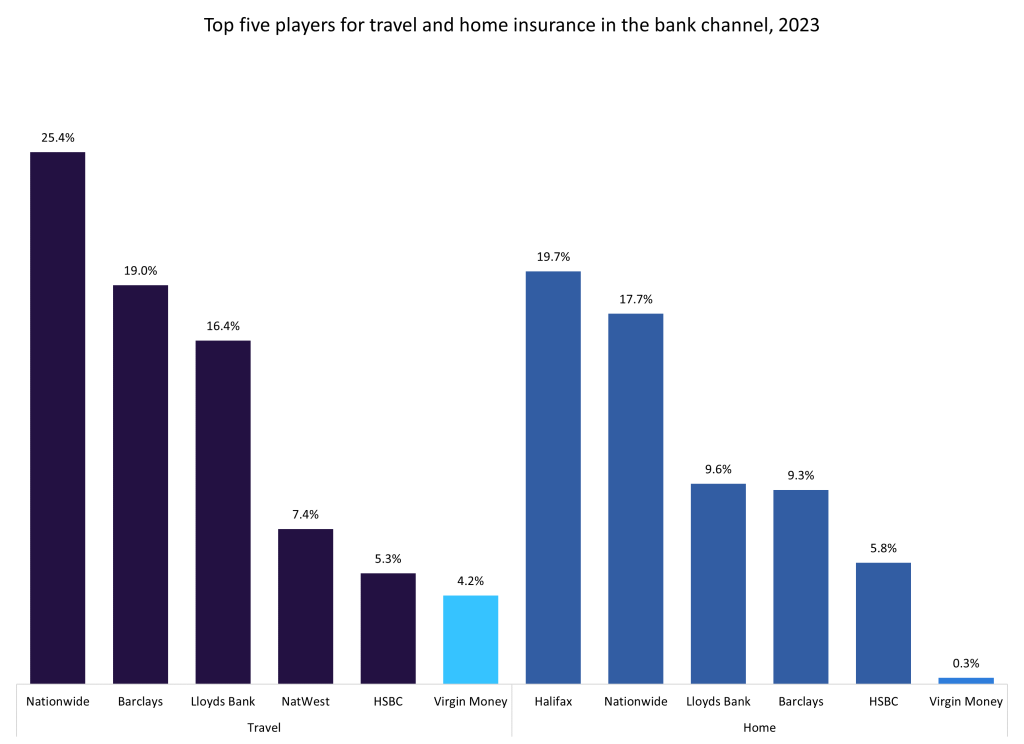
The bancassurance market has undergone significant changes globally and in the UK alone, regulation such as RDR and MMR, has put extra pres¬sure on operating models that can continue to deliver a compelling customer proposi-tion and be commercially viable.
Coupled with the impact of Basel III and the banking crisis, the prime focus for all banks has shifted to risk management, de-leveraging non-core assets and cost efficiencies in their reorganisation.
The UK advent of RDR predicted a decline in the IFA market to the benefit of the bancassurers.
However, due to increased regulatory, economic and political change, the banks have not been able to capitalise on this opportunity and the IFA market still remains dominant.
Operating models also lack consistency across the globe with the US favouring the introducer/broker model, and countries such as Egypt restricting banks from offering advice with the route to market in the form of partnerships with insurance provid¬ers.
Meanwhile, a large portion of the Middle East and African markets are known as the "unbanked" – holding no current accounts or face to face interaction, yet are digitally advanced in terms of m-commerce accessibility.
Range of models
How well do you really know your competitors?
Access the most comprehensive Company Profiles on the market, powered by GlobalData. Save hours of research. Gain competitive edge.

Thank you!
Your download email will arrive shortly
Not ready to buy yet? Download a free sample
We are confident about the unique quality of our Company Profiles. However, we want you to make the most beneficial decision for your business, so we offer a free sample that you can download by submitting the below form
By GlobalDataThe UK has a range of models – ranging from directly authorised, where the bank’s staff sell the insurance provider’s products – to the introducer model, where the insurance providers’ salesforce or a bank owning its own insurance company, provides solu¬tions for their advisers.
Despite the vast changes and financial challenges faced by banks since the crisis began, there are still many clear benefits of a bancassurance model, for customers, banks and insurance providers.
The core benefit will be to provide solu¬tions and support to the millions of custom¬ers that hold bank accounts – over 1.5 billion across the globe.
As regulatory changes overhaul the tradi¬tional route to advice, the bank still remains as the go-to institution for many consumers.
[Research highlights] that a high street presence is still the most common way for customers to find financial advice in the UK (44%); showing the importance that bricks and mortar play in helping consumers to connect with financial advice.Consumers also often find the permanence of an office or bank branch reassuring, helping to build trust.
Another aspect of bancassuance is that] while the bank manages challenges in meeting its leveraging commitments; insurance companies do not have the similar con¬straints, and therefore are able to provide solutions, without the bank having the cost of self-manufacturing.
As risk appetite across the banking sector decreases insurance companies are therefore in a position of strength to offer introduced models to their own-employed salesforce.
Furthermore, according to research only 8% of consumers would rule out using advice from a bank or building society, showing the powerful position those large financial services companies are in if they are able find a low cost way to offer finan¬cial advice.
Partnering
By partnering with a bancassurance model, this ensures that millions of customers are able to access competitive and quality solutions, but at the same time helping the bank manage their costs by outsourcing the prod¬uct manufacturing, expertise and advice.
Financial services, whether it be insurance companies, banks, buildings societies, or stockbrokers, they are all the same in consumers’ eyes.
[Looking ahead], the industry itself needs to recognise the need to work together more closely to ensure we adapt to consumer expectations.Failure to realise this will result in the consumer looking elsewhere for their finan¬cial solutions, such as online self-service or operations that will be established in the future by non-banking institutions.
As an example, Crowdfunding has become an overnight success, seeing people use this model to raise capital, invest capital and even purchase homes.
Only by working together will the banks and insurance providers ensure they continue to remain part of this evolution, and not become the beta-max of the video world.
To make sure the bancassurance model works, a truly open and aligned partnership is fundamental for a successful relationship.
It is important that both parties have the same objectives, which should be around achieving three wins – a winning proposi¬tion for the customer and a winning solution which works for the bank and the insurer on all levels.
When this situation occurs all parties invest and develop the partnership. How¬ever, if one aspect is out of sync the partner¬ship will fail.
Part of achieving a successful partnership is openness and transparency for all parties involved – the insurer should have an open book philosophy allowing all aspects to be challenged.
Customers understand that companies need to make a profit in order to survive – otherwise shareholders will simply invest elsewhere and the company will fail.
What is important is that earnings are reasonable, if this is the case there should be no issues. Another critical aspect of a successful partnership is culture.
Are the insurers and banks’ cultures and values aligned? This has never been more relevant than it is today with the increased focus on treating customers fairly. If your values and behaviours are not aligned it is difficult to work together as it often results in friction and conflicting objectives. Due diligence and actually meeting the people and teams you will work with are critical.
A flashy corporate website might say one thing, but the real test is meeting the indi¬viduals who you will be working with and the people on the phones and in the opera¬tions who will be speaking and dealing with their customers.
The final aspect over and above basic hygiene factors would be the ability of the insurer to work with the bank and guide them through the increasing demands around regulation.
The cost and risk of getting things wrong when it comes to providing financial service products to customers is not insignificant.
Increased regulation could even cause certain banks to stop providing protection to their customers for fear of penalties and brand damage if things go wrong – look at the life protection gap in the UK with 4 out of 10 mortgages having no life cover.
Working with an insurer who can guide the bank through the ever changing regula¬tory landscape insuring their customers are correctly protected, whilst managing the risks to the bank is essential.
Bancassurance is complex and it has never been more the case that banks need to consider much wider issues when choosing the right insurance partner.
Bancassurance global snapshot and outlook
According to the 2020 Foresight: Bancassurance report, available on the Insurance Intelligence Center, (IIC) gross written premiums generated through bancassurance increased from US$315.7 billion in 2006 to US$385.6 billion in 2012.
This is expected to grow further and reach US$482.4 billion by the end of 2016. Overall, the premium is expected to register a CAGR of 4.33% during 2006-2016.
Looking ahead, the report says bancassurance has a high growth potential in Asia Pacific, and the market share of bancassurance in the life insurance segment is expected to range between 25% to 54% in its leading economies (excluding India, which is dominated by traditional distribu¬tion channels).
Meanwhile, by 2016, the market share of bancassurance in the life insurance segment is expected to range between 55% to 85% in most European countries except Germany and the UK, where traditional distribu¬tion channels are expected to capture the majority of the market share.
The report adds that low insurance pen¬etration in the Americas is indicative of the huge potential of the business to expand.
For example, countries like Brazil and Mexico, which have comparatively low insurance penetration, provide huge scope for the development of insurance industry as well as bancassurance.
In the US, meanwhile, banks have struggled to achieve a market share of 2% for bancassurance







